August 6, 2015
August 5, 2015
Proofs of the link between workplace design and productivity? Here are three
by Charles Marks • Case studies, Facilities management, News, Wellbeing, Workplace design
 Three new studies have joined the already extensive body of work linking workplace design and productivity. The most extensive is the research carried out by communications consultancy Lansons which looks at every aspect of the British workplace to uncover the experiences and most commonly held perceptions of around 4,500 workers nationwide. The study is broken down into a number of sections which examine topics such as workplace design, wellbeing, job satisfaction, personal development and leadership. The second is a study from the Property Directors Forum which explores the experiences of occupiers and finds a shift in focus away from cost reduction and towards investing to foster employee productivity. The final showcases the results of a post occupancy survey conducted by National Grid following the refurbishment of the firm’s Warwick headquarters by AECOM.
Three new studies have joined the already extensive body of work linking workplace design and productivity. The most extensive is the research carried out by communications consultancy Lansons which looks at every aspect of the British workplace to uncover the experiences and most commonly held perceptions of around 4,500 workers nationwide. The study is broken down into a number of sections which examine topics such as workplace design, wellbeing, job satisfaction, personal development and leadership. The second is a study from the Property Directors Forum which explores the experiences of occupiers and finds a shift in focus away from cost reduction and towards investing to foster employee productivity. The final showcases the results of a post occupancy survey conducted by National Grid following the refurbishment of the firm’s Warwick headquarters by AECOM.
August 5, 2015
Special edition of Ergonomics in Design focuses on sedentary work 0
by Mark Eltringham • News, Wellbeing, Workplace design
 The Human Factors and Ergonomics Society (HFES) has published a special edition of its in-house journal dedicated to the much discussed topics of sedentary working and the need for us to get out of our seats. You’ll have to pay for it however, although individual sections are available for a one off cost. HFES claims to be the world’s largest scientific association for human factors and ergonomics professionals, with more than 4,800 members worldwide. The July issue of their journal Ergonomics in Design looks at the range of ailments associated with sedentary working, including obesity, heart disease and diabetes, weighs up what can be done to change the way people work, as well as the benefits and possible downsides to the most commonly suggested solutions, including sit-stand workstations, alternative seating designs and – God help us – treadmill desks.
The Human Factors and Ergonomics Society (HFES) has published a special edition of its in-house journal dedicated to the much discussed topics of sedentary working and the need for us to get out of our seats. You’ll have to pay for it however, although individual sections are available for a one off cost. HFES claims to be the world’s largest scientific association for human factors and ergonomics professionals, with more than 4,800 members worldwide. The July issue of their journal Ergonomics in Design looks at the range of ailments associated with sedentary working, including obesity, heart disease and diabetes, weighs up what can be done to change the way people work, as well as the benefits and possible downsides to the most commonly suggested solutions, including sit-stand workstations, alternative seating designs and – God help us – treadmill desks.
July 30, 2015
Far from dying out, the office is becoming more essential than ever
by Luke Finch • Comment, Technology, Workplace design
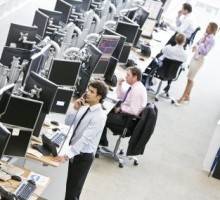 Samsung recently released a new report which explores how our offices might look in the year 2025. The death of the office has been predicted over and over again, however the Samsung Smarter Futures Report goes against the grain and predicts that the office could actually become more important than ever. Driven by the adoption of smart technology the report claims that offices will become hubs for productivity and collaboration and what Samsung calls ‘Creative Villages’. Smart technology will create devices and systems that take notes, automate admin tasks, organise meetings and deliver information as you need it. This will mean employees have more time for face to face communication and collaborative work. As a consequence, current trends such as flexible working and agile workspace could actually become less of an issue than they are currently.
Samsung recently released a new report which explores how our offices might look in the year 2025. The death of the office has been predicted over and over again, however the Samsung Smarter Futures Report goes against the grain and predicts that the office could actually become more important than ever. Driven by the adoption of smart technology the report claims that offices will become hubs for productivity and collaboration and what Samsung calls ‘Creative Villages’. Smart technology will create devices and systems that take notes, automate admin tasks, organise meetings and deliver information as you need it. This will mean employees have more time for face to face communication and collaborative work. As a consequence, current trends such as flexible working and agile workspace could actually become less of an issue than they are currently.
July 28, 2015
Beyond branding – how workplace design can express a firm’s culture
by Gary Chandler • Comment, Facilities management, Workplace, Workplace design
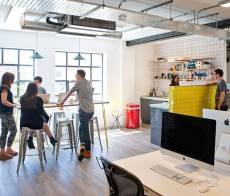 When it comes to the incorporation of branding and identity into a workplace, there is a simple option, which is to produce a design that faithfully incorporates the firm’s logos, colours and straplines in the interior. There’s nothing wrong with this, except for the fact that it is literally superficial and so may miss the opportunity to create an office design that scratches beneath the surface to reveal what lies beneath. When you get past the layers of branding and identity, you uncover something that we call culture. This can take things to a whole new level because the challenge becomes how to create a workplace design that communicates and fosters both the identity and the culture of the organisation. The benefits to the organisation can be enormous, not least because this approach bridges a number of disciplines such as human resources and office design and so drives a number of strategic objectives.
When it comes to the incorporation of branding and identity into a workplace, there is a simple option, which is to produce a design that faithfully incorporates the firm’s logos, colours and straplines in the interior. There’s nothing wrong with this, except for the fact that it is literally superficial and so may miss the opportunity to create an office design that scratches beneath the surface to reveal what lies beneath. When you get past the layers of branding and identity, you uncover something that we call culture. This can take things to a whole new level because the challenge becomes how to create a workplace design that communicates and fosters both the identity and the culture of the organisation. The benefits to the organisation can be enormous, not least because this approach bridges a number of disciplines such as human resources and office design and so drives a number of strategic objectives.
July 27, 2015
Coworking juggernaut WeWork announces plans to dominate London
by Mark Eltringham • Flexible working, News, Property, Workplace design
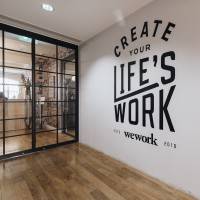 Earlier this month, US based coworking juggernaut WeWork announced that it had opened the UK’s largest space of its kind in Moorgate in East London. Now, according to a report in the journal CoStar, the firm is looking to become a major tenant in the commercial property market in London in the same way that it has come to dominate Manhattan. According to the report, WeWork is looking to acquire over 1 million sq. ft. of space in the capital over the next 18 months as it seeks to provide coworking space for its growing customer base of young creative and technology businesses and other start ups. If it succeeds in finding the space it wants, the firm will have quadrupled the commercial property it occupies in London to 1.5 million sq. ft. WeWork is already Manhattan’s largest tenant and is now valued at $10 billion, having started in 2010.
Earlier this month, US based coworking juggernaut WeWork announced that it had opened the UK’s largest space of its kind in Moorgate in East London. Now, according to a report in the journal CoStar, the firm is looking to become a major tenant in the commercial property market in London in the same way that it has come to dominate Manhattan. According to the report, WeWork is looking to acquire over 1 million sq. ft. of space in the capital over the next 18 months as it seeks to provide coworking space for its growing customer base of young creative and technology businesses and other start ups. If it succeeds in finding the space it wants, the firm will have quadrupled the commercial property it occupies in London to 1.5 million sq. ft. WeWork is already Manhattan’s largest tenant and is now valued at $10 billion, having started in 2010.
July 26, 2015
Insight Weekly on robots at work, agile working, workplace trends and more
by Mark Eltringham • Facilities management, Newsletter, Workplace, Workplace design
 In this week’s issue; how the majority of managers are more than happy to welcome robots into the workplace; a survey reveals how much extra work autonomous workers put in each week; Mark Eltringham argues we need to keep a sense of perspective about how important our work is; a groundbreaking UK public sector estate scheme is rolled out nationwide; a recent series of events draws out the key workplace trends from this year’s NeoCon exhibition; a new OECD report calls for more action on the emerging digital workplace; Sara Bean reports on the calls for the Government not to abandon its pledges on zero carbon buildings; and a survey reveals that the vast majority of women don’t feel they are discriminated against at work. Subscribe for free quarterly issues of Work&Place and weekly news here, follow us on Twitter and join our LinkedIn Group to discuss these and other stories.
In this week’s issue; how the majority of managers are more than happy to welcome robots into the workplace; a survey reveals how much extra work autonomous workers put in each week; Mark Eltringham argues we need to keep a sense of perspective about how important our work is; a groundbreaking UK public sector estate scheme is rolled out nationwide; a recent series of events draws out the key workplace trends from this year’s NeoCon exhibition; a new OECD report calls for more action on the emerging digital workplace; Sara Bean reports on the calls for the Government not to abandon its pledges on zero carbon buildings; and a survey reveals that the vast majority of women don’t feel they are discriminated against at work. Subscribe for free quarterly issues of Work&Place and weekly news here, follow us on Twitter and join our LinkedIn Group to discuss these and other stories.
July 23, 2015
Autonomous workers put in a day extra each week, claims new research
by Mark Eltringham • Flexible working, Knowledge, News, Workplace, Workplace design
 One of the usual arguments against offering people greater autonomy over where and how they work is a lack of control and a consequent lack of effort from employees. However new evidence published by German researchers suggests what actually happens is the opposite. When the employer relinquishes control, people work more. The paper, from researchers in Berlin based on an eight year study, found that people who enjoy ‘full and unrecorded’ autonomy over how they manage their work put in an extra seven hours each week. Interestingly, even those with fixed hours give their employers an extra two hours weekly, but the report suggests there is a clear correlation between personal autonomy and hours worked. Other factors that influence hours worked include seniority, job security, satisfaction and tenure. Taken together these account for nearly two hours of extra work each week.
One of the usual arguments against offering people greater autonomy over where and how they work is a lack of control and a consequent lack of effort from employees. However new evidence published by German researchers suggests what actually happens is the opposite. When the employer relinquishes control, people work more. The paper, from researchers in Berlin based on an eight year study, found that people who enjoy ‘full and unrecorded’ autonomy over how they manage their work put in an extra seven hours each week. Interestingly, even those with fixed hours give their employers an extra two hours weekly, but the report suggests there is a clear correlation between personal autonomy and hours worked. Other factors that influence hours worked include seniority, job security, satisfaction and tenure. Taken together these account for nearly two hours of extra work each week.
July 22, 2015
OECD nations need to urgently address the coming digital workplace
by Mark Eltringham • News, Technology, Workplace, Workplace design
 There is now an urgent need for the world’s growing number of digital economies to shift their focus to how they help people to manage their own transition to a new form of digital workplace. That is the main conclusion of a new report from the Organisation for Economic Co-operation and Development (OECD). The OECD Digital Economy Outlook 2015 claims that while most countries have moved from a narrow focus on communications technology to a broader digital approach, they now need to address the significant and growing risk of disruption in areas like privacy and jobs. The report – which covers areas from broadband penetration and industry consolidation to network neutrality and cloud computing in OECD countries says more should be done to offer information and communication technology (ICT) skills training to help people transition to new types of digital jobs.
There is now an urgent need for the world’s growing number of digital economies to shift their focus to how they help people to manage their own transition to a new form of digital workplace. That is the main conclusion of a new report from the Organisation for Economic Co-operation and Development (OECD). The OECD Digital Economy Outlook 2015 claims that while most countries have moved from a narrow focus on communications technology to a broader digital approach, they now need to address the significant and growing risk of disruption in areas like privacy and jobs. The report – which covers areas from broadband penetration and industry consolidation to network neutrality and cloud computing in OECD countries says more should be done to offer information and communication technology (ICT) skills training to help people transition to new types of digital jobs.
July 21, 2015
Neocon highlights four of the world’s most important office design trends
by Neil Franklin • Comment, Events, Workplace design
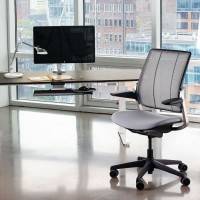 We live in the Global Village, Marshall McLuhan’s idea from 1962 of an electronically contracted world in which attitudes, cultures and our political, business and legislative framework begin to pull together. Yet each nation is shaped by little differences. That is why the comedy programme The Office found an audience on both sides of the pond, but one that needed Wernham Hogg in Slough to become Dunder Mifflin in Scranton, Pennsylvania for it to work for the local audience. The central idea of the show has a universal appeal but needs a local voice. And what is true for The Office with a big O is also true for the office with a small o. This was the takeaway conclusion of a series of events staged in London and Manchester last week by Milliken and Humanscale. The touchstone for these events was a debate about the main conclusions of of June’s Neocon.
We live in the Global Village, Marshall McLuhan’s idea from 1962 of an electronically contracted world in which attitudes, cultures and our political, business and legislative framework begin to pull together. Yet each nation is shaped by little differences. That is why the comedy programme The Office found an audience on both sides of the pond, but one that needed Wernham Hogg in Slough to become Dunder Mifflin in Scranton, Pennsylvania for it to work for the local audience. The central idea of the show has a universal appeal but needs a local voice. And what is true for The Office with a big O is also true for the office with a small o. This was the takeaway conclusion of a series of events staged in London and Manchester last week by Milliken and Humanscale. The touchstone for these events was a debate about the main conclusions of of June’s Neocon.
July 19, 2015
Weekly Insight on gender pay, green buildings, agile working and more
by Mark Eltringham • Architecture, Facilities management, Newsletter, Workplace, Workplace design
 In this week’s issue; Mark Eltringham argues that the focus on a mythical gender pay gap, as repeated by the Prime Minister, obscures the real issues women (and a growing number of men) face; more evidence emerges to crush another myth, this time the one that equates the health impacts of sitting with smoking; the UK’s ‘greenest Government ever’ abandons its zero carbon buildings plans; Simon Heath questions the reported impact of robots on workplaces; Sara Bean on how firms are leaving remote working employees to fund their own kit; the under-reported and ongoing allure for employees of filthy lucre over flexible working opportunities; and the enduring suspicion of wearable technology in the British workplace. Subscribe for free quarterly issues of Work&Place and weekly news here, follow us on Twitter and join our LinkedIn Group to discuss these and other stories.
In this week’s issue; Mark Eltringham argues that the focus on a mythical gender pay gap, as repeated by the Prime Minister, obscures the real issues women (and a growing number of men) face; more evidence emerges to crush another myth, this time the one that equates the health impacts of sitting with smoking; the UK’s ‘greenest Government ever’ abandons its zero carbon buildings plans; Simon Heath questions the reported impact of robots on workplaces; Sara Bean on how firms are leaving remote working employees to fund their own kit; the under-reported and ongoing allure for employees of filthy lucre over flexible working opportunities; and the enduring suspicion of wearable technology in the British workplace. Subscribe for free quarterly issues of Work&Place and weekly news here, follow us on Twitter and join our LinkedIn Group to discuss these and other stories.





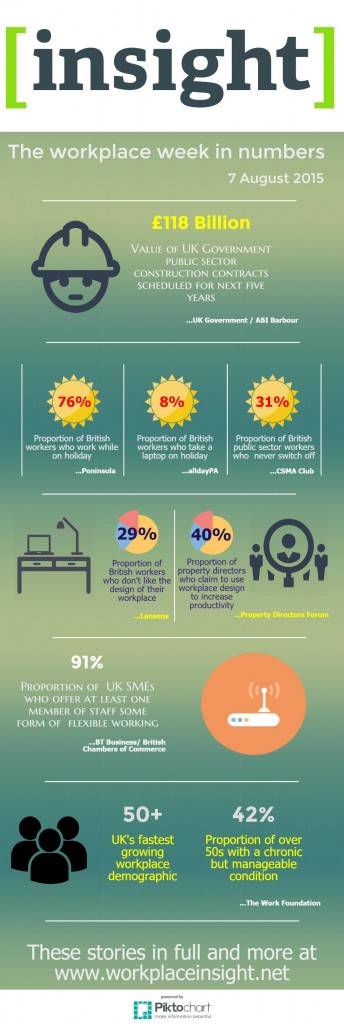


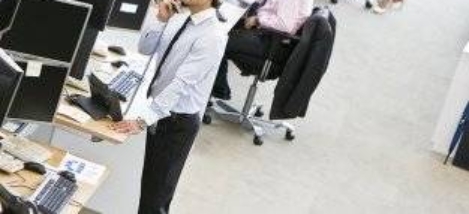
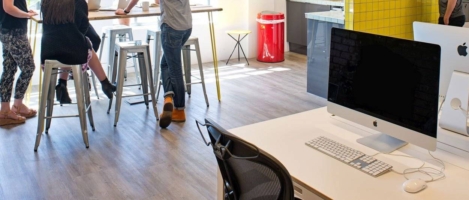
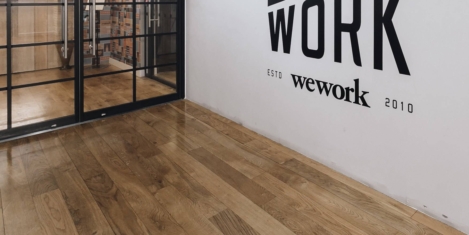



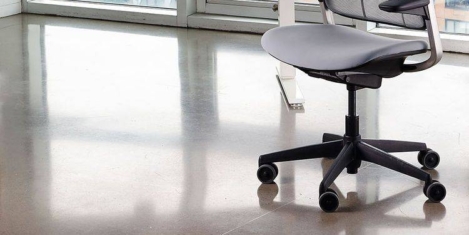








August 5, 2015
Using office relocation as a vehicle for positive organisational change 0
by Lee Parsons • Comment, Facilities management, Workplace, Workplace design
(more…)